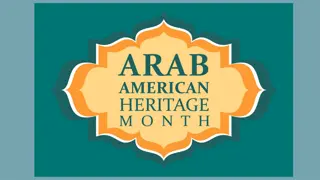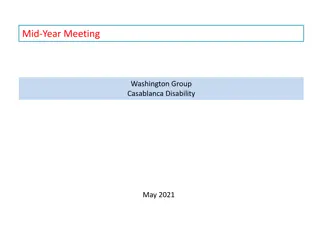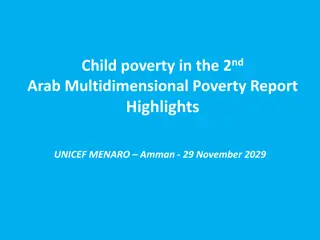Life in Auranitis, Jebel Arab Trachonitis, and Leja Batanaea
Auranitis, Jebel Arab Trachonitis, and Leja Batanaea were regions with main cities like Canatha, Adraa, and Bostra. The villages in these areas had no formal plans, with houses similar to those in Dead Cities, featuring storage downstairs, courtyards, flat roofs, and internal staircases. Villagers may have been former nomads transitioning to settled life. Inscriptions suggest the existence of administrative bodies in the villages, with communal funds and land, along with various village officials.
Download Presentation

Please find below an Image/Link to download the presentation.
The content on the website is provided AS IS for your information and personal use only. It may not be sold, licensed, or shared on other websites without obtaining consent from the author.If you encounter any issues during the download, it is possible that the publisher has removed the file from their server.
You are allowed to download the files provided on this website for personal or commercial use, subject to the condition that they are used lawfully. All files are the property of their respective owners.
The content on the website is provided AS IS for your information and personal use only. It may not be sold, licensed, or shared on other websites without obtaining consent from the author.
E N D
Presentation Transcript
Auranitis = Jebel Arab Trachonitis = Leja Batanaea = Nuqra The main cities of the region: Canatha; Adraa; Bostra Later Dionysias, Philippopolis, Maximianopolis, Constantia, Neve Parts of Trachonitis and Batanaea may have been imperial estates The best evidence for village life comes from the northern part of Auranitis and from Trachonitis, where the villages do not appear to have been subject to any city
Main phases of development: first from late third / early fourth century to early fifth; and second from early sixth to seventh centuries.
The villages have no formal plans The immediate environs of the villages had small gardens and plantations, with the larger fields lying beyond these Water was supplied by rainfall, and collected in communal reservoirs
Houses like those of Dead Cities: storage downstairs, courtyards But flat roofs Staircases are internal, except for those that give access to the roof Sometimes several stories, so that the houses resemble towers Considerable variation in houses: some much more elaborate and larger than others probably the residences of late Roman rural aristocrats
Many of the villagers may have been former nomads who adopted a settled life; there is some uncertainty about the relationship of the Hauran villagers to the writers of Safaitic graffiti in the desert to the east
Inscriptions suggest that the villages of the Leja and northern Hauran may have had administrative bodies: the villagers had communal funds and communal land, and may have had special buildings for public meetings The inscriptions also mention a variety of village officials, which implies an elaborate system of self-government
Are such villages developing cities? The variety of officials might suggest that these villages were developing proto-civic administrations However, most of the inscriptions are concerned with building projects, and the officials named may be temporary posts Some titles may be inexact translations of Aramaic terms for village chief or head man The inscriptions provide us with important information about the way in which the villages managed their affairs: religious duties; land management; property ownership; social organization
Some villages, such as Dionysias, Philippopolis, Maximianopolis, Constantia, and Neve achieved city status Is this part of a deliberate Roman policy of urbanization? Some have thought that the title metrokomia, found in Trachonitis and Batanaea, represents an intermediate stage between village and city An alternative view is that metrokomiai were villages that were on imperial estates, and therefore could never become cities If they had lain outside imperial estates, the metrokomiai would perhaps have been promoted to cities























